Toshiba 42VL963 Review
Toshiba 42VL963
Toshiba's new passive 3D TV is a fine and affordable family TV.
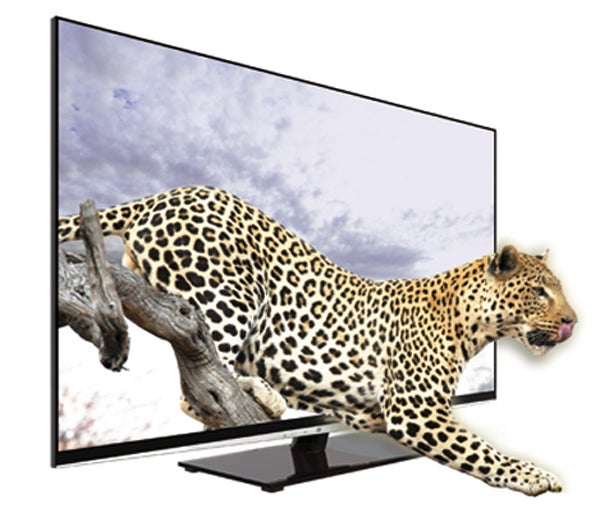
Verdict
Pros
- Crisp, bright, colourful pictures
- Attractive design
- Decent value
Cons
- Some backlight issues
- Not enough online content
- DLNA features are half-hearted
Key Specifications
- Review Price: £831.00
- 42in LCD TV with edge LED lighting
- passive 3D with four pairs of glasses
- Toshiba Places online service
- Multimedia playback from USB
- '400Hz' system
While we wait with bated breath for the presumably imminent replacement for Toshiba’s top-end WL and YL models, today brings us face to face with the next best thing: the 42VL963. With its Jacob Jensen Studio design, online features and passive 3D playback, it’s the most high-end model from Toshiba’s 2012 range that we’ve seen so far.
Jacob Jensen really has done a good job with its looks. Its black frame is barely a cm wide around three sides, and while this width increases a little along the bottom edge, you don’t mind because it’s offset there by a swanky protruding silver ‘triangle’ that provides some welcome relief from the blackness elsewhere. 
It’s not as slim round the rear as some other LCD TVs this year, but this is no big deal in our opinion. Especially as its build quality is good compared with most Toshiba sets, complete with a glass topsheet that neatly brings the screen and bezel onto the same plane.
Connections
The 42VL963’s connections are mostly good but with one major disappointment. That disappointment is the absence of built-in Wi-fi – an omission that would have been easy to take on an entry-level TV, perhaps, but which certainly rankles on a TV that sits towards the upper end of Toshiba’s 2012 range.
You can make the TV wi-fi capable by adding an optional USB Wi-Fi dongle, and Toshiba claims that they’ve left Wi-Fi out of the 42VL963 to keep it as affordable as possible. But with even Toshiba’s cheap-as-chips Blu-ray players carrying integrated Wi-Fi these days, this excuse is a little hard to take.
Multimedia support
Getting back to the good stuff, as well as four v1.4 (3D-Ready) HDMIs, the 42VL963 sports a pair of USBs for playing back photo, video or music files from USB sticks. There is also a LAN to keep you going until you get the Wi-Fi dongle, via which you can either stream multimedia files from connected DLNA PCs (though the system for this is pretty primitive), or else go online with Toshiba’s ‘Places’ service.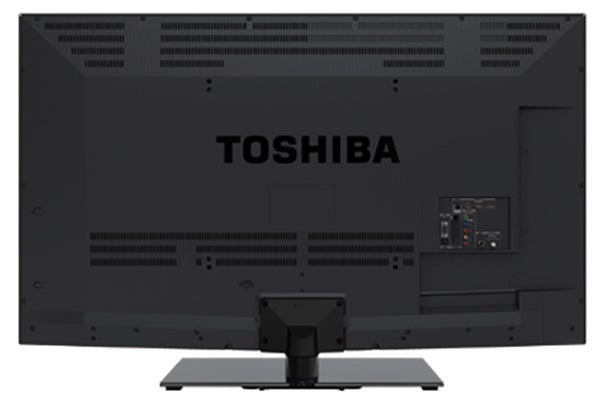
If you get hold of the Wi-Fi dongle, you can even connect the TV to a PC equipped with the new WiDi system, offering a more advanced and intuitive way of using your PC on your TV.
It’s worth adding, too, that the 42VL963 carries a satellite port alongside the more expected RF input. But while this does allow you to tune satellite channels into the 42VL963, unfortunately the TV doesn’t support the Freesat HD wrapper, making the satellite option pretty pointless for most UK users.
Not the best for wall mounting
People wanting to wall-hang the 42VL963 should note that unhelpfully most of the 42VL963’s connections stick straight out of its rear, rather than being accessed from the TV’s sides. So you’ll have to dig a hole in your wall to accommodate the connection ‘block’.
The 42VL963’s relatively high position in Toshiba’s range finds it boasting two key features beyond the Smart TV stuff we’ve already mentioned. First, it’s a passive 3D model, complete with four pairs of glasses included for free. This immediately reveals that the panel at the TV’s heart has been sourced from LG – but that still leaves plenty of scope for Toshiba to add its own electronics and processing.
Which brings us to the 42VL963‘s other key feature: ‘AMR400’ processing. This uses a combination of a 100Hz panel with backlight scanning and blinking to deliver a 400Hz-like effect that should, hopefully, work wonders on countering the blurring problems still common to some extent on LCD technology.
The Toshiba Places platform, as we’ve had cause to say many times over the past couple of years, is very much in the second division of online TV services. Its presentation is great, with large, richly coloured and well-organised content ‘places’, but it’s way off the pace in content terms.
The only highlights at the time of writing are Twitter, Facebook, the BBC iPlayer, the Cartoon Network, HiT Entertainment, Box Office 365, Acetrax, Viewser, YouTube and iConcerts. Quite a percentage of these apps require subscriptions, and in the overall content level is miles behind that of Panasonic, Sony and, especially, LG and Samsung.
Picture calibration
Toshiba is pretty good at providing plenty of picture set up tools, and this proves true of the 42VL963 too. There’s a reasonably fulsome colour management system, for instance, as well as various settings for the TV’s active backlight control, noise reduction and motion processing engines. Though as we’ll see, a few more options where the motion processing is concerned might not have been a bad idea.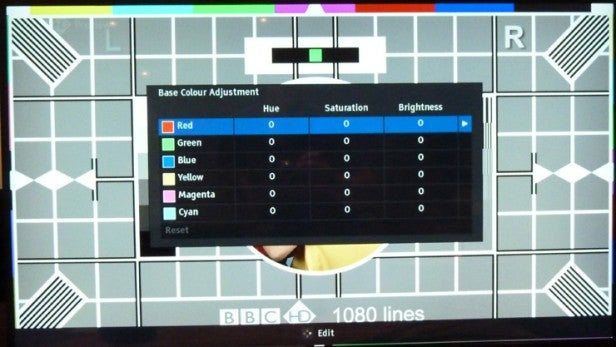
With normal TV fodder the 42VL963’s pictures look terrific. Colours, for instance, look bold, punchy, and eye-catching, yet also possess both plenty of blend subtlety and some surprisingly natural tones. Skin tones can look a touch over-wrought using some of the provided presets, but this is easily rectified by a couple of minutes with the colour management tools.
HD broadcast channels also look impeccably crisp and detailed on the 42VL963, leaving you in no doubt as to why HD became so popular so fast.
Impressive upscaling
Another surprising strength of the 42VL963 noted while testing out broadcast fare is the set’s upscaling. It manages to make even quite low-quality sources look much sharper than they are naturally, yet at the same time it manages to keep noise levels respectably low. So long, at least, as you don’t use the over-aggressive Dynamic picture setting.
We were also very impressed while watching broadcast fare on the 42VL963 by the apparent contrast of its images. As noted already, colours look very bright and punchy, but peak whites a;sp look pure and bold and, best of all, there also seems to be a very respectable black level response sitting in opposition to the bright stuff.
Black level investigated
With memories of numerous past Toshiba black level failings still fresh in our minds, though, we clearly have to push the 42VL963’s performance with dark material a bit harder – namely by feeding it Blu-rays of a couple of our favourite dark films, Alien and Harry Potter and The Deathly Hallows Pt II. And perhaps predictably these tough-to-show movies did reveal a few shortcomings. 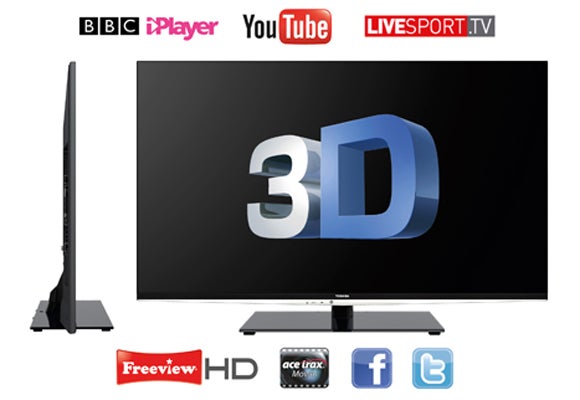
The most obvious one is that while watching 21:9-ratio films – which are very common in the blockbuster movie world – with the Active backlight system set to our preferred Low mode, we frequently spotted in the black bars above and below the picture ‘chunks’ of extra greyness in the sections of predominantly dark pictures that contain bright elements. At times this issue was definitely obvious enough to be considered distracting.
Backlight blocking
Fortunately you don’t tend to feel nearly as aware of these backlight blocks when watching 16:9 sources that fill the screen – though you can occasionally see greyish blocks of light in really high-contrast sequences, such as where Voldemort’s face fills the centre of the screen against a nearly completely black backdrop, near the start of Chapter 12 of the Harry Potter Blu-ray.
Turning the active backlight control off removes the light blocking issue, but it also greatly reduces the image’s black level depth – as well as revealing a little backlight inconsistency in the corners. Pushing the active backlight feature up to high, meanwhile, increases the general brightness and shadow detail of the picture, and possibly slightly reduces the impact of the light ‘blocking’ in the process. But it also makes black colours look greyer.
Overall, despite its issues we’d say that the 42VL963’s black level response is solid for its price point, especially when watching relatively undemanding fare. But it also causes enough distractions to potentially upset serious film fans.
Another little issue with dark scenes is that with the backlight and contrast settings optimised to deliver the most uniform and richest black colour, there is a shortage of shadow detail in very dark parts of the picture.
Motion handling
Blu-rays reveal another slight weakness of the 42VL963 too. For without any motion processing in play there’s evidence of resolution being lost as objects pass across the screen. Yet the motion processing you can call in to counter this doesn’t work particularly well, leaving images looking slightly juddery or ‘pulsy’ during camera pans if you use the processing’s lowest power setting. The highest motion processing mode reduces the judder, but leaves images looking unnatural and prone to artefacts around large moving objects.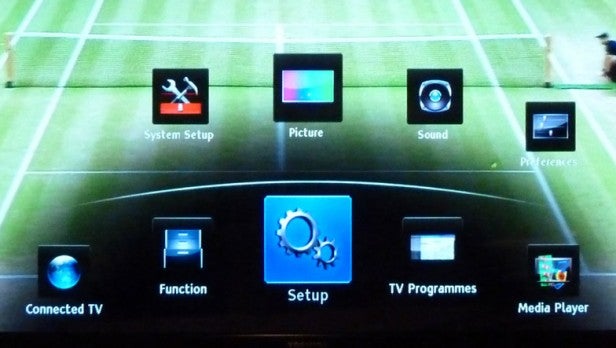
In the end we decided we generally preferred to leave the motion processing off, at least when watching films. Which is actually a bit of a shame when some other motion processing systems have improved rather nicely this year.
While we appear to be in a bit of a negative rut here, we might as well bring up one more issue we noted with Blu-rays – namely that using its default settings the 42VL963 can leave pictures looking a touch grainy. Happily this is easily remedied by slightly reducing the sharpness setting.
3D
Wrapping up our picture tests with 3D, it’s here that the 42VL963 really comes into its own. It delivers all the customary advantages of the passive 3D format in spades, including: really bright, direct, colourful pictures versus active 3D models; a cheap, family-friendly 3D experience courtesy of the four pairs of glasses included with the TV; a more relaxing 3D experience you can watch for longer without feeling tired than the active 3D system; and general freedom from crosstalk noise unless you watch from more than 13 degrees above or below the screen. 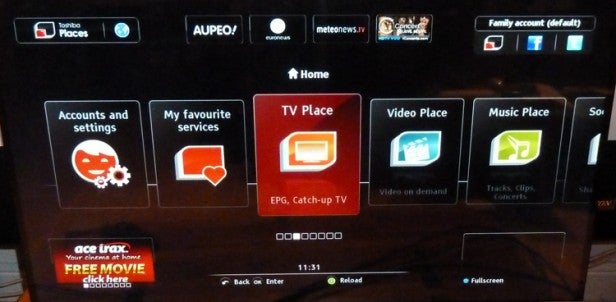
The 42VL963 does also inevitably show the downsides of the passive 3D system, namely visible horizontal line structure over very bright parts of the image and some occasionally striking jaggedness to contoured edges. But overall the positives outweigh the negatives, making the 42VL963’s 3D seldom less than a pleasure to watch.
Gaming potential
The 42VL963’s bright, colourful, no-nonsense pictures together with its 3D talents make it a screen of great potential for gamers. So we were a little disturbed to record a few ‘rogue’ input lag measurements of around 70ms – easily enough to compromise your performance in reaction based games. Thankfully these 70ms moments are the exception to a much more regular and acceptable measurement of around 35ms, but it’s a shame to find such input lag ‘peaks’ happening at all.
Accompanying the 42VL963’s mostly very enjoyable pictures is a surprisingly robust audio system. There’s a nice open tone to the mid-range, along with a passable amount of bass as well as trebles which sound clear without descending into harshness.
Verdict
Toshiba’s 42VL963 certainly isn’t perfect. Not building in Wi-Fi seems a bit off on a TV that sits towards the top end of Toshiba’s range this year, and there are a few issues surrounding black level and motion performance that might deter die-hard movie fans. Toshiba’s online service needs more content, too.
However, overall we still rather like the 42VL963. For much of the time its 2D pictures are bright, colourful, crisp and clean, in both HD and standard def mode, and its 3D pictures are relaxing and family friendly. All of which seems pretty fair for a 42in 3D TV that costs less than £850.
How we test televisions
We test every TV we review thoroughly over an extended period of time. We use industry standard tests to compare features properly. We’ll always tell you what we find. We never, ever, accept money to review a product.
Trusted Score
Score in detail
-
Features 7
-
3D Quality 9
-
Value 8
-
Design 9
-
2D Quality 8
-
Sound Quality 8
Features
| Size (Inch) | 42in |
| Display Type | LED |
| Max. Resolution | 1920 x 1080 |
| Full HD 1080p | Yes |
| Digital Tuner | Yes |
| Freeview HD | Yes |
| Freesat HD | No |
| 3D Ready | Yes |
| Refresh Rate (Hertz) | '400'Hz |
Connectivity
| HDMI | 4 (v1.4) |
| Component | 1 |
| Composite | 1 |
| Scart | 1 (RGB) |
| Digital Audio Out | Yes (optical) |
| Headphone | 1 |
| Charging/Computer Connection | 2 |
| Ethernet | Yes |
| WiFi | Yes (via optional dongle) |
Physical Specifications
| Height (Millimeter) | 579mm |
| Width (Millimeter) | 995mm |
| Depth (Millimeter) | 34.7mm |
| Weight (Gram) | 12900g |

